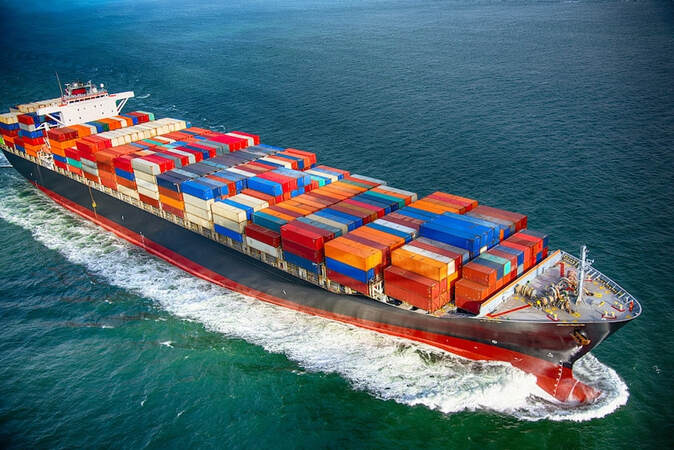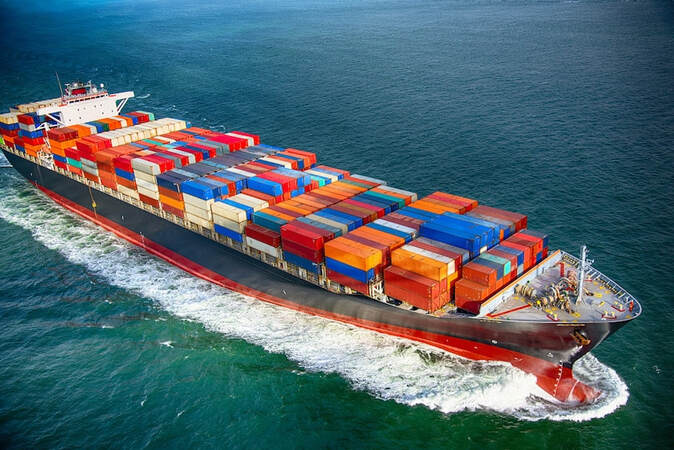|
Containerized transport has revolutionized the shipping industry, providing a cost-effective and efficient method for transporting goods across the globe. However, beyond its economic advantages, containerized transport also offers significant environmental benefits. In this article, we will explore how sustainable Shipping Containers contribute to a greener and more environmentally friendly transportation system.
Reduced Energy Consumption: One of the key environmental advantages of containerized transport is the reduced energy consumption it offers compared to traditional shipping methods. By utilizing standard-sized containers, cargo can be loaded and unloaded more efficiently, optimizing vessel space. This reduces the number of trips required and minimizes fuel consumption, resulting in lower greenhouse gas emissions. Efficient Use of Resources: Containerization enables efficient use of resources, both in terms of shipping vessels and transportation infrastructure. The standardized containers are designed to maximize space utilization, allowing for stacking and easy handling. This means that ships, trains, and trucks can carry a larger volume of goods, resulting in fewer trips and less congestion on the roads and waterways. By utilizing existing transportation infrastructure more effectively, containerized transport helps minimize the need for new construction and reduces the overall carbon footprint of the shipping industry. Intermodal Connectivity: Sustainable Shipping Containers also facilitate intermodal connectivity, enabling seamless transfer between different modes of transportation such as ships, trains, and trucks. This integration reduces the reliance on a single mode of transport, optimizing logistics and minimizing the distance goods travel. As a result, the overall transportation process becomes more streamlined and efficient, reducing energy consumption and emissions. Waste Reduction and Recycling: Containers are designed to be durable and long-lasting, with an average lifespan of around 25 years. Their sturdy construction allows for repeated use, reducing the need for constant production of new containers. Additionally, when containers reach the end of their life, they can be recycled and repurposed for various applications such as storage units, offices, or even affordable housing. This promotes a circular economy approach, minimizing waste generation and conserving resources. Alternative Fuel Adoption: The push for sustainability in the shipping industry has led to the exploration and adoption of alternative fuels. As Shipping Containers transport plays a crucial role in global trade, the industry has been actively seeking greener alternatives to traditional fossil fuels. Shipping companies are increasingly investing in vessels powered by liquefied natural gas (LNG), hydrogen fuel cells, or even electric propulsion systems. By embracing these cleaner energy sources, containerized transport contributes to a significant reduction in greenhouse gas emissions and air pollution. Environmental Regulations and Standards: The environmental benefits of containerized transport are further reinforced by international regulations and standards. The International Maritime Organization (IMO) has implemented stricter emission controls and efficiency guidelines for vessels. These regulations, such as the IMO 2020 sulfur cap, incentivize shipping companies to adopt cleaner technologies and fuels. Containerized transport, with its efficiency and reduced emissions, aligns well with these environmental regulations and supports the industry's transition towards a more sustainable future. Sustainable Shipping Containers offer numerous environmental benefits that contribute to a greener and more efficient transportation system. By reducing energy consumption, optimizing resource utilization, promoting intermodal connectivity, and supporting waste reduction and recycling, containerized transport plays a vital role in mitigating the environmental impact of global trade. As the shipping industry continues to prioritize sustainability, containerized transport will remain at the forefront, driving positive change and helping create a more sustainable future for our planet.
0 Comments
In recent years, the automotive industry has witnessed a revolution in vehicle technology. From electric powertrains to advanced driver assistance systems (ADAS), innovations have been aimed at improving safety, efficiency, and overall performance. One of the key technologies driving this transformation is Vehicle radar.
Automotive Radar utilizes radio waves to detect and measure the distance, speed, and direction of objects in the vehicle's vicinity. It has proven to be a game-changer in enhancing vehicle performance, especially in the areas of collision avoidance, adaptive cruise control, and autonomous driving. One of the primary applications of vehicle radar is collision avoidance. By constantly scanning the surrounding environment, radar sensors can detect objects such as other vehicles, pedestrians, or obstacles in real-time. This information enables the vehicle's safety systems to issue warnings or even intervene to prevent collisions. Radar's ability to operate in various weather conditions, including rain, fog, or darkness, makes it a reliable solution for enhancing safety on the roads. Moreover, radar plays a vital role in the development of adaptive cruise control (ACC) systems. ACC utilizes radar sensors to maintain a safe distance from the vehicle ahead, automatically adjusting the speed to match the flow of traffic. By accurately measuring the distance and relative speed of nearby vehicles, radar enables smooth and seamless driving experiences. It reduces the need for constant speed adjustments by the driver and enhances the overall efficiency of the vehicle, leading to improved fuel economy. As the industry progresses towards autonomous driving, Automotive Radar has become even more crucial. Radar sensors are an integral part of advanced driver assistance systems (ADAS) that enable vehicles to perceive their surroundings and make informed decisions. They provide a 360-degree view of the vehicle's environment, detecting and tracking objects in real-time. This information is essential for autonomous functions like lane keeping assist, blind spot detection, and automated parking, among others. Furthermore, automotive radar has undergone significant advancements in recent years. Traditional radar systems relied on a single sensor, typically located in the front of the vehicle. However, modern radar systems employ multiple sensors strategically positioned around the vehicle, allowing for comprehensive coverage and enhanced accuracy. This multi-sensor approach enables improved object detection, tracking, and identification, further enhancing the safety and performance of the vehicle. The future of Automotive Radar looks promising. With the development of millimeter-wave radar and the integration of artificial intelligence (AI), radar systems are becoming even more capable. Millimeter-wave radar operates at higher frequencies, providing better resolution and accuracy. This enables the detection of smaller objects, such as pedestrians or bicycles, and enhances the overall precision of radar-based systems. Moreover, AI algorithms are being employed to process the vast amounts of data collected by radar sensors. By analyzing the radar information in real-time, AI algorithms can make intelligent decisions, improving the vehicle's ability to predict and react to potential hazards. This combination of radar technology and AI has the potential to revolutionize the automotive industry by enabling fully autonomous vehicles that can navigate complex environments safely. Automotive Radar has emerged as a revolutionary technology, transforming the way vehicles operate on the roads. Its applications in collision avoidance, adaptive cruise control, and autonomous driving have significantly improved safety, efficiency, and overall performance. With further advancements in radar technology and the integration of AI, the future holds even greater possibilities for enhancing vehicle performance and shaping the future of transportation. The radar revolution is well underway, and its impact on the automotive industry is set to be profound. Shipping Containers are made to resist harsh climatic and road conditions, which states that they are well secured from thieves. With strong doors and windows, and the preference for robust locks, they are improbable to be broken into lest there is an effort to take expensive produce or things. The sturdiness of the construction also states they can resist heavy winds, and can be protected with tie-downs to inhibit motion or falling.
By the end of 2021, the global Shipping Containers Market is projected to be worth US$ 11,168.8 Mn and is anticipated to expand at a CAGR of 6.1% from 2022 to 2030. Prior containerisation, cargo had to be laden and delivered onto ships with the help of labors. Malcom McLean’s idea to combine things into protective containers drastically enhances efficacy and cut expenses for shippers. It also decreased destruction and theft, and making it convenient to transmit goods across the globe. Containers are created with strong Corten steel and other anti-erosion substances, so they can resist rough weather and road surroundings without being destructed. They can be weighted up to nine high for shipping, and are created to save their contents from harsh particles at sea or on land. Factually, several non-profit industries utilized Shipping Containers through recent natural calamities such as earthquakes, floods and fires to protect people affected by it. Containers are convenient to transmit as they can be loaded onto flat trucks and transported as one unit. They are very inexpensive compared to renting space in a warehouse to keep the inventory. They are very comfortable convenient to warehouse storage, also as one have direct access to the items. Additionally, one can conveniently move the containers around to allow changing storage necessities. Containers are created to shift goods across the globe and are robust enough to transmit the home or office. Moving Shipping container is very budget friendly compared to hiring proficient movers or renting a truck, additionally one can save on storage price as one will have much time to pack up the items prior the shipment. One can also rent a truck and trailer to transmit various Shipping Containers at the same point of time. A main benefits of containers is that they are consistent and inter-operable over regions. This states that one can utilize them to transmit both raw materials and end products from one region to another, such as heavy machinery and devices, refrigerated perishables, metals, retail products, and others. Containers are also unique for storing and transmitting noxious substances such as hydrocarbons, chemicals, and fluids. In Comparison to general storage preferences, containers are very protective. They are made from steel and can be fixed with locks that need a special device to open. They can also be designed with GPS tracing equipment to assure that the property is reaching at its destination on time. This is particularly essential if one is shipping high-value items or documents that are required to be kept protective from theft and extreme weather. Shipping Containers are also convenient to transport compared to trucks and can be laden onto flatbeds for conveyance to the new location. This makes them a best option if one is moving from a place to another, or vice versa. Containers are a general prospect in cargo shipping. They are a prevalent option for businesses that require transportation of goods internationally for business owing to their sturdiness, dependability and cost. Anyhow, they are not without their drawbacks. One of the main drawback of containers is that they are not equipped to be kept. The steel they are designed of generates severe heat, which states that if utilized for human occupancy, they would require heavy insulation orderly to ignore very high and low heat. |
AuthorWrite something about yourself. No need to be fancy, just an overview. Archives
July 2023
Categories
All
|



 RSS Feed
RSS Feed
